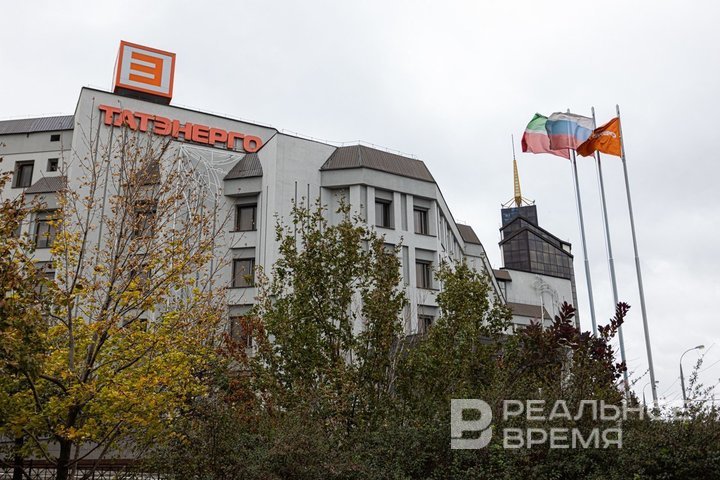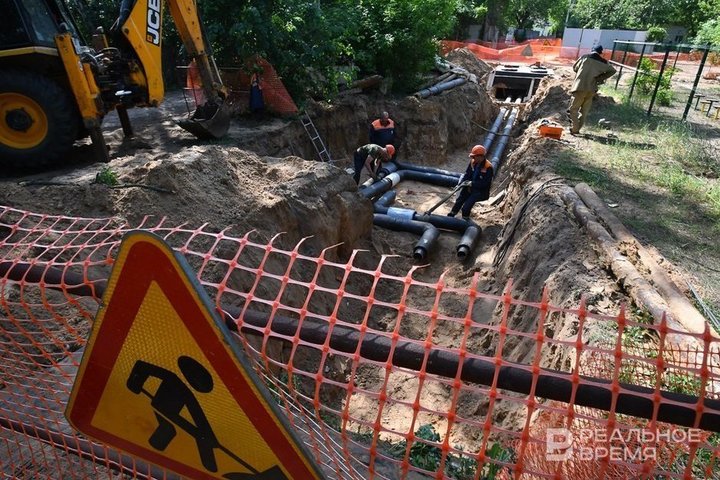‘This is the first time we've heard that we're behind schedule’
Nizhnekamsk was allocated the most for the repair of heating networks at the expense of Modernization of Utility Infrastructure project, but the regulator demanded that the investment programme be revised

This year, Tatarstan became a participant in the federal project Modernization of Public Utility Infrastructure for 2025-2030 and raised utility tariffs by another 1.5%. This made it possible to attract an additional 979 million rubles from residents' wallets to repair 30 km of the republic's networks, as reported at a meeting of the investment headquarters under the State Tariff Committee of the Republic of Tatarstan. 90% of this is for the rotten heating networks of Nizhnekamsk, Kazan and Naberezhnye Chelny, which are on the balance sheet of Tatenergo. Realnoe Vremya reports on why the regulator is again dissatisfied with Tatenergo's approaches in Nizhnekamsk.
1.5% of tariff revenue “let in” for a new national project
It seems that the tariff race for utilities in Tatarstan is unfolding with renewed vigour. Today, at a meeting of the investment headquarters under the State Tariff Committee of the Republic of Tatarstan, it became known that the authorities of the republic were forced to take on “increased obligations” and agreed to increase the tariff burden on citizens by another 1.5%. And the almost 1 billion rubles received from above will be used for the reconstruction of the publiicinfrastructure of the republic within the framework of the federal project Modernization of the Public Utility Infrastructure for 2025-2030, said First Deputy Chairperson of the committee Larisa Khabibullina.
“At present, the most important task of the state is to ensure sustainable development of the economy and create conditions for ensuring the safe life of citizens, — she said. — Transformations in the field of housing and communal services are especially important as the most socially oriented, because 100% of the population are consumers. One of the significant decisions was the implementation of the project to modernize the communal infrastructure at the federal level. Since 2025, the national project Infrastructure for Life has been implemented, the main goal of which is to ensure a new quality.
As it turned out, the memorandum on the modernization of public utilities infrastructure until 2030 was signed the day before by the Prime Minister of the Republic of Tatarstan Alexey Pesoshin with the Ministry of Construction of the Russian Federation. The agreement provides for the possibility of extra-budgetary financing of repair work at the expense of 1.5% of tariff revenue. Thus, it was decided to spend 801.5 million rubles on heat supply networks, 107.8 million rubles on water supply, and 69.8 million rubles on sanitation. In total, we are talking about updating about 30 km of networks. According to Larisa Khabibullina, these are targeted, “coloured” funds that cannot be “spent on salaries or other purposes.” 40 thousand per linear meter of heating pipes and 26 thousand — water pipes
However, to perform the “kilometre” the regulator has set a recommended estimated cost of pipes. Thus, a linear meter of heating networks should be no more than 40,000 rubles, and water networks — no more than 26,000 rubles. The calculation is based on the analysis of construction and installation work for technological connections and investment agreements of previous years. “The cost of one linear meter should be at the level of the market average. And not like someone wants to lay fiberglass pipes, and someone polypropylene, which means the cost will differ several times — from 20 thousand to 110 thousand per 1 linear meter. This should not happen," Larisa Khabibullina noted.
According to her, the regulator recommends adhering to these indicators when concluding contracts with contractors, otherwise the republic will not achieve federal indicators within the framework of the federal project Modernization of Public Utility Infrastructure for 2025-2030.

Tatarstan, like other regions, is obliged to fulfil three conditions specified in the national project “Infrastructure for Life”: annually reduce the accident rate by 3%, update networks by 2.5% by 2030 and implement investment programmes by 100%.
Tatenergo aimed for 110,000, and Almetyevsk PTS — for 80,000
Nizhnekamsk, Kazan, Chelny received the most for network modernization. “Nizhnekamsk prevails: there is federal, republican, and tariff financing. The city was given the largest amount. And we really hope that they will approach this heating season with good indicators. In order to approach the heating season normally, the network reliability indicator must be 3%. Before the start of the heating season, they had 0.8%, we are waiting for at least 2%,” said Larisa Khabibullina.
True, generating companies were not ready for the maximum rates for the purchase of pipes. Thus, Almetyevsk PTS decided to install fiberglass pipes at 70-80,000 per metre, which is twice as high as the established threshold of 40,000 rubles. They were offered to look for alternative sources of financing or adjust the investment program. There is no final decision. Following the results of the auction, Tatenergo increased the price by 30% in Kazan and Nizhnekamsk.

“This is the first time we hear that we are not meeting the deadline, — this is how Alexander Korolev, Head of the Department for Strategic Development and Investment Implementation of Tatenergo, responded to the wish of the former Deputy Chairman of the Committee Larisa Khabibullina to adjust the investment program for the repair of heating networks in Nizhnekamsk.
This year, Tatenergo received 152 million rubles within the framework of the project for the implementation of three events to reconstruct the networks. The State Committee of Tatarstan on Tariffs is dissatisfied for two reasons. Firstly, the estimated cost of one linear meter turned out to be higher than recommended. Secondly, the programme includes the repair of trunk networks with 50% wear, although the distribution networks with 70% wear are in greatest need of them, the department believes.
Everything above that, at your own expense
“The cost was developed on the basis of design and estimate documentation,” Alexander Korolyov was surprised. “Please inform us of the parameters that are needed. But, based on necessity, the events will not change. They are planned, and we will do them,” he did not give in.
“You have three events for such a large amount. We do not agree with this approach,” Larisa Khabibullina objected.

“In principle, Tatenergo has the ability to lay expensive pipes, but everything on top of that they will have to subsidize themselves,” Larisa Khabibullina later commented to journalists. “For example, by attracting depreciation from electrical capacities. For example, replacing a boiler should be financed by depreciation of heat supply and generation, since the boiler is involved in the generation of heat and energy. The boiler should not be repaired only by depreciation in ‘heat.’”
This year, the State Tariff Committee of Tatarstan for the first time managed to reverse the position of generators on spending funds received from depreciation of electrical capacities. In total, the total cost of investment programs for heat supply amounted to 13 billion rubles, and 800 million rubles due to programme. The discussion of investment programs in the field of water supply and sanitation was without disagreement. This year, 4.5 billion rubles have been allocated for these purposes, which will be divided among 15 organizations of the republic.